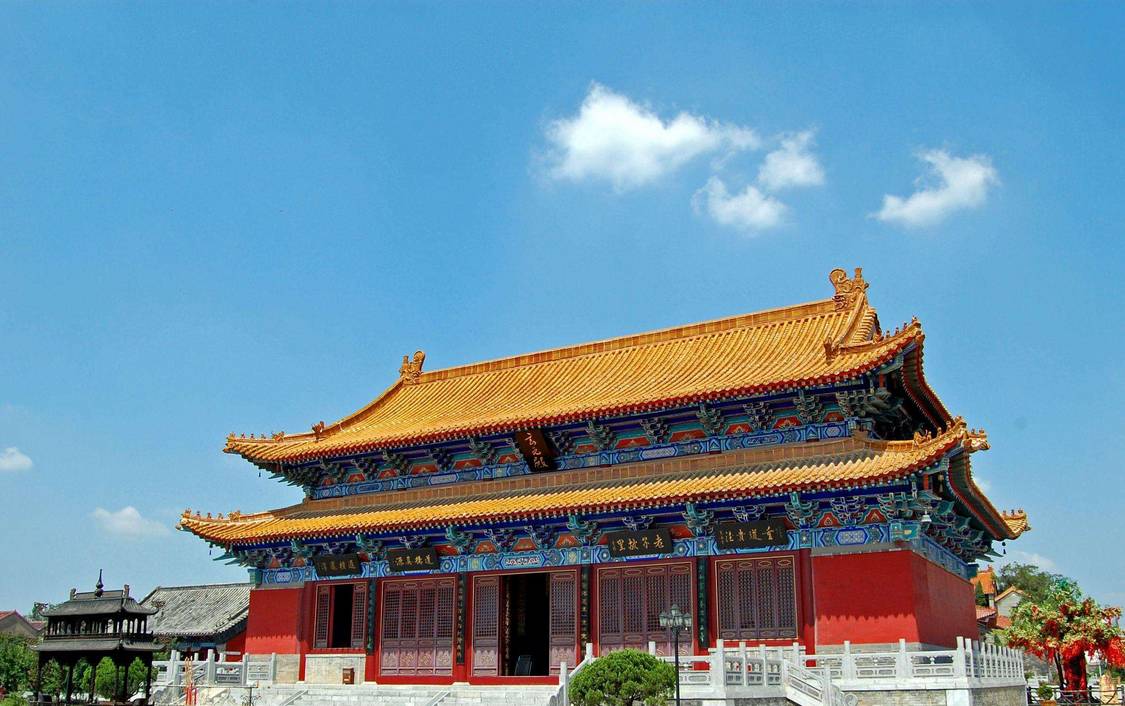Laozi's Hometown Tourist Area is located in Luyi County, Henan Province, and consists of Taiqing Palace, Mingdao Palace, and other scenic spots. This article focuses on the relics and historical sites related to the birth, growth, and sacrificial activities of Laozi, a great ancient Chinese thinker and world-renowned historical and cultural figure. Combined with other famous historical and cultural relics and humanistic landscapes in the surrounding area, it has formed a comprehensive tourist destination that integrates history and culture, natural scenery, and leisure and health.
Taihao Mausoleum Temple
Located 1.5 kilometers north of Huaiyang County in Henan Province, the Taihao Fuxi Mausoleum is a national key cultural relic protection unit and is also known as the 'First of the Three Sovereigns.' It is one of China's eighteen famous mausoleums. As it is considered the 'Human Ancestor' of the Chinese nation, it is referred to as the 'First Mausoleum Under Heaven.'
Taiqing Palace
The Taiqing Palace ruins in Luyi are located in Taiqing Palace Town, 5 kilometers east of Luyi County in Henan Province. It is a large site complex that encompasses numerous relics from the Eastern Han to the Yuan Dynasty, including those related to the worship of Laozi by successive emperors.
Jialu River
In Henan, there is a river that has been flowing for more than two thousand years, called the Jialu River. On the map of Henan, today's Jialu River originates in Xinmi City, flows northeast through Zhengzhou City, turns east at the northern suburbs of the city, passes through Zhongmu, reaches Kaifeng, then Weishi County, and finally flows into the Shaying River in Zhoukou City, eventually merging into the Huai River. It is 255.8 kilometers long and includes famous rivers such as Jinshui River, Suoxu River, Xionger River, Qili River, and Dongfeng Canal. In ancient times, the Jialu River had abundant water, allowing for boat navigation, but it also frequently caused floods, earning it the nickname 'Little Yellow River.' Today, although the Jialu River may appear shallow and deep in places, it is the longest and most extensive river in Henan Province, aside from the Yellow River. From the Jialu River Bridge, one can enjoy the beautiful scenery of the Jialu River.
Guandi Temple is located on the north bank of the Yinghe River in Zhoukou City. It is 'a well-preserved ancient architectural complex in the Yu Plain with high architectural artistic value.' As a national key cultural relic protection unit, it is known as 'one of the eight scenic spots of Zhoukou.' It is like a solidified history that records the past commercial prosperity and economic flourishing of Zhoujiakou. The name of this Guandi Temple is Shanshan Guild Hall. It was built in the 33rd year of Kangxi (1693), expanded multiple times during the Qianlong and Jiaqing periods, and rebuilt in the 16th year of Daoguang (1832). The total construction area is 145 square meters. It is 158 meters long from north to south, 105 meters wide from east to west, covering an area of 12,590 square meters, and occupying more than 20 acres. The entire architectural complex is arranged along the north-south central axis, divided into three courtyards, with a deep layout, rigorous structure, and rich charm.













